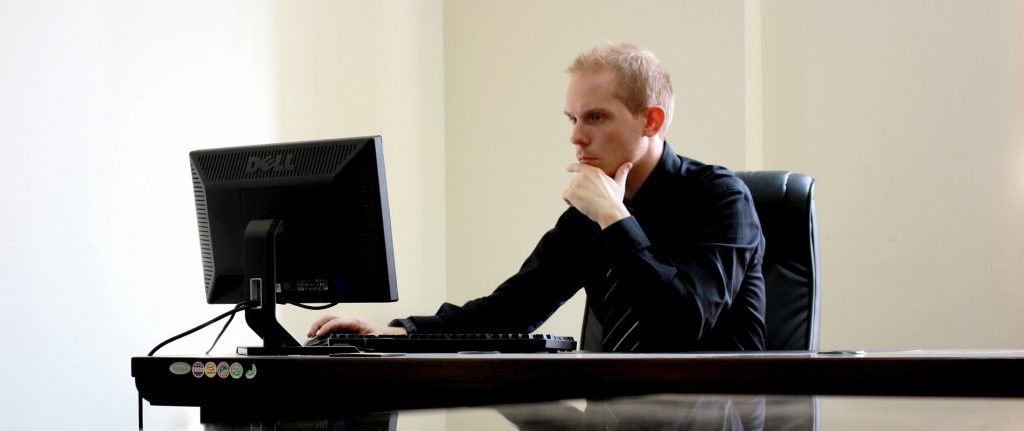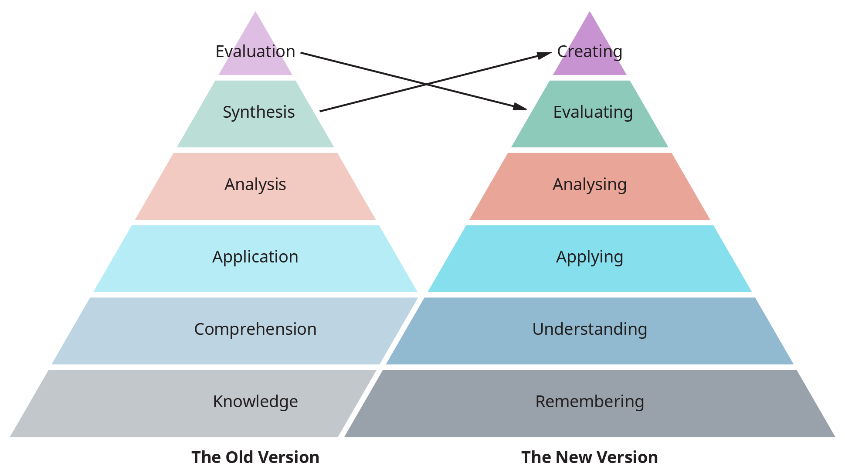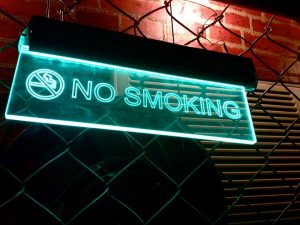Thinking
Tyler Cawthray and Akshay Sahay

Introduction
Thinking and problem-solving are core skills that university educators aim to teach students. Learning different ways of thinking and how to resolve or respond to problems creates well-rounded learners that are capable of breaking down issues or problems into manageable parts, adapting to changing situations or contexts and devising creative or novel solutions. These are key characteristics required in the 21st century digitally focused work environment.
This chapter will provide you with an overview of different types of thinking, give guidance on how you can practise these approaches before then moving onto a discussion of problem-solving. Examples of the various forms of thinking discussed will be provided. Finally, the chapter will conclude by providing a detailed overview of the research process as it relates to problem solving.
Creative thinking
Has anyone ever told you that you have a creative flair? If so, celebrate! That’s a good personality trait to nurture. Creativity is needed in all occupations and during all stages of life. Learning to be more in tune with your own version of creativity can help you think more clearly, resolve problems, and appreciate setbacks. You’re creative if you repurpose old furniture into a new function. You’re also creative if you invent a new biscuit recipe for a friend who has a nut allergy. Further, you’re using creativity if you can explain complex biological concepts to your classmates in your tutorial or workshop. Creativity pops up everywhere. When creative thinking comes into play, you’ll be looking for both original and unconventional ideas, and learning to recognise those ideas improves your thinking skills all around.
Would you learn more about the French Revolution by eating foods popular in that era? What if you were to stop using your phone for all non-emergency communication to understand how news flowed in the early 20th century? These examples present creative ways to approach learning the experiences of a specific time in history. When actors want to learn about a character they’ll be playing, they often engage in method acting to immerse themselves in the role. They may maintain a different accent or wear only clothes their character would wear even when they are not at rehearsals, all so they can feel what it was like for their character.
Creativity doesn’t always present itself in the guise of a chart-topping musical hit or other artistic expression. We need creative solutions throughout the workplace—whether in the board room, emergency room, or classroom. It was no fluke that the 2001 revised Bloom’s cognitive taxonomy, originally developed in 1948, placed a new word at the apex—create. That is the highest level of thinking skills. As this book shows, we do all need to use and develop the lower thinking skills that include remembering, applying, and analysing, but true intelligence and successful thinking move beyond these levels to invention.

Many assessments and lessons you’ve seen during your schooling have likely been arranged with Bloom’s taxonomy in mind. Regurgitating the minute details of Goldilocks or Romeo and Juliet demonstrates far less comprehension than fashioning an original ending that turns the tables, or developing a board game from the story. Author Gregory Maguire used the base plot of L. Frank Baum’s 1900 book The Wonderful Wizard of Oz and the 1939 movie The Wizard of Oz to create the smash-hit 2003 Broadway musical Wicked that tells the story from the perspective of the Wicked Witch of the West, making her a sympathetic character. This creative approach calls for far more critical and creative thinking than memorising facts. Creating new out of old or new out of nothing is how we ended up with manned space flight, mobile phones, and rap music. Continuing to support creativity in whatever form it takes will be how we cure cancer, establish peace, and manipulate the time-space continuum. Don’t shortchange your own creativity. Nineteenth-century American writer and humorist Mark Twain may have been partially correct when he said:
“There is no such thing as a new idea. It is impossible. We simply take a lot of old ideas and put them into a sort of mental kaleidoscope. We give them a turn and they make new and curious combinations. We keep on turning and making new combinations indefinitely; but they are the same old pieces of colored glass that have been in use through all the ages.”

You may feel like you cannot come up with new ideas, but even the process of combining and recombining familiar concepts and approaches is a creative act. A kaleidoscope creates a nearly infinite number of new images by repositioning the same pieces of glass. It is certainly a pretty metaphor of idea generation, but even if old ideas are reworked to create new solutions to existing problems or we embellish a current thought to include new ways of living or working, that renewal is the epitome of the creative process.
It’s common to think of creativity as something used mostly by traditional artists—people who paint, draw, or sculpt. Indeed, artists are creative, but think of other fields in which people think just a little differently to approach situations in their discipline. The famous heart surgeon Dr. Denton Cooley didn’t have an exact model when he first implanted an artificial heart. Chemist Stephanie Kwoleck discovered life-saving Kevlar when she continued work on a substance that would usually be thrown away. Early US astronauts owed their ability to orbit and return to Earth based on creative uses of mathematics by people like Karen Johnson. Inventor and actress Hedy Lamarr used diagrams of fish and birds to help aviation pioneer Howard Hughes produce faster airplanes. Indeed, biomimicry, an approach to innovation that seeks sustainable solutions to human challenges by emulating nature’s time-tested patterns and strategies, is now a huge field of study. This list could go on and on.

Analytical thinking
Thinking helps in many situations, as we’ve discussed throughout this chapter. When we work out a problem or situation systematically, breaking the whole into its component parts for separate analysis, to come to a solution or a variety of possible solutions, we call that analytical thinking. Characteristics of analytical thinking include setting up the parts, using information literacy, and verifying the validity of any sources you reference. While the phrase analytical thinking may sound daunting, we do this sort of thinking in our everyday lives when we brainstorm, budget, detect patterns, plan, compare, work puzzles, and make decisions based on multiple sources of information. Think of all the thinking that goes into the logistics of a dinner-and-a-movie date—where to eat, what to watch, who to invite, what to wear, popcorn or ice-creams—when choices and decisions are rapid-fire, but we do it relatively successfully all the time.
Employers specifically look for candidates with analytical skills because they need to know employees can use clear and logical thinking to resolve conflicts that cause work to slow down or may even put the company in jeopardy of not complying with state or commonwealth requirements. If everything always went smoothly on the shop floor or in the office, we wouldn’t need front-line managers, but everything doesn’t always go according to plan or corporate policy. Your ability to think analytically could be the difference between getting a good job and being passed over by others who prove they are stronger thinkers. A mechanic who takes each car apart piece by piece to see what might be wrong instead of investigating the entire car, gathering customer information, assessing the symptoms, and focusing on a narrow set of possible problems, is not an effective member of the team. Some career fields even have set, formulaic analyses that professionals in those fields need to know how to conduct and understand, such as a cost analysis, a statistical analysis, or a return on investment analysis.
Critical Thinking
Critical thinking has become a buzz phrase in education and corporate environments in recent years. The definitions vary slightly, but most agree that thinking critically includes some form of judgement that thinkers generate after careful analysis of the perspectives, opinions, or experimental results present in a particular problem or situation. Before you wonder if you’re even capable of critical thinking, consider that you think critically every day. When you grab an unwashed T-shirt off the top of the pile on the floor of your bedroom to wear to university but then suddenly remember that you may see the person of your dreams on that route, you may change into something a bit less disheveled. That’s thinking critically—you used data (the memory that your potential soul mate travels the same route you use on that day on campus) to change a sartorial decision (dirty shirt for clean shirt), and you will validate your thinking if you do have a successful encounter with said soul mate.
Likewise, when you decide to make your lunch rather than just grabbing a bag of chips, you’re thinking critically. You must plan, buy the food, possibly prepare it, arrange to and carry the lunch with you, and you may have various reasons for doing that—making healthier eating choices, saving money for an upcoming trip, or wanting more quiet time to unwind instead of waiting to purchase food. You are constantly weighing options, consulting data, gathering opinions, making choices, and then evaluating those decisions, which is a general definition of critical thinking.
Consider the following situations and how each one demands your thinking attention. Which do you find most demanding of critical thinking and why?
- Participating in competitive athletic events
- Watching competitive athletic events
- Reading a novel for pleasure
- Reading a textbook passage for study
Critical thinking forces you to determine the actual situation under question and to determine your thoughts and actions around that situation. Critical thinking differs according to the subject you’re thinking about, and as such it can be difficult to pin down any sort of formula to make sure you are doing a good job of thinking critically in all situations. While you may need to adapt this list of critical thinking components, you can get started if you do the following:
- Question everything
- Conduct legitimate research
- Limit your assumptions
- Recognise your own biases
- Gather and weigh up all options
Additionally, you must recognise that changes will occur and may alter your conclusions now and in the future. You may eventually have to revisit an issue you effectively resolved previously and adapt to changing conditions. Knowing when to do that is another example of critical thinking. Informed flexibility or knowing that parts of the plan may need to change and how those changes can work into the overall goal, is also a recognised element of thinking critically.

For example, early in the 20th century, many people considered cigarette smoking a relaxing social pastime that didn’t have many negative consequences. Some people may still consider smoking a way to relax; however, years of medical research have proven with mounting evidence that smoking causes cancer and exacerbates numerous other medical conditions. Researchers asked questions about the impact of smoking on people’s overall health, conducted regulated experiments, tracked smokers’ reactions, and concluded that smoking did impact health. Over time, attitudes, evidence, and opinions change, and as a critical thinker, you must continue to research, synthesise newly discovered evidence, and adapt to that new information.
Defending against Bias
Once you have all your information gathered and you have checked your sources for currency and validity, you need to direct your attention to how you’re going to present your now well-informed analysis. Be careful on this step to recognise your own possible biases. Facts are verifiable; opinions are beliefs without supporting evidence. Stating an opinion is just that. You could say “Blue is the best color,” and that’s your opinion. If you were to conduct research and find evidence to support this claim, you could say, “Researchers at Oxford University recognise that the use of blue paint in mental hospitals reduces heart rates by 25% and contributes to fewer angry outbursts from patients.” This would be an informed analysis with credible evidence to support the claim.
Not everyone will accept your analysis, which can be frustrating. Most people resist change and have firm beliefs on both important issues and less significant preferences. With all the competing information surfacing online, on the news, and in general conversation, you can understand how confusing it can be to make any decisions. Look at all the reliable, valid sources that claim different approaches to be the best diet for healthy living: ketogenic, low-carb, vegan, vegetarian, high fat, raw foods, paleo, Mediterranean, etc. All you can do in this sort of situation is conduct your own serious research, check your sources, and write clearly and concisely to provide your analysis of the information for consideration. You cannot force others to accept your stance, but you can show your evidence in support of your thinking, being as persuasive as possible without lapsing into your own personal biases. Then the rest is up to the person reading or viewing your analysis.
Factual Arguments versus Opinions
Thinking and constructing analyses based on your thinking will bring you in contact with a great deal of information. Some of that information will be factual, and some will not be. You need to be able to distinguish between facts and opinions so you know how to support your arguments. Begin with basic definitions:
- Fact: a statement that is true and backed up with evidence; facts can be verified through observation or research
- Opinion: a statement someone holds to be true without supporting evidence; opinions express beliefs, assumptions, perceptions, or judgements
Of course, the tricky part is that most people do not label statements as fact and opinion, so you need to be aware and recognise the difference as you go about honing your critical thinking skills.
You probably have heard the old saying “Everyone is entitled to their own opinions,” which may be true, but conversely, not everyone is entitled to their own facts. Facts are true for everyone, not just those who want to believe in them. For example, mice are animals is a fact; mice make the best pets is an opinion. Many people become very attached to their opinions, even stating them as facts despite the lack of verifiable evidence. Think about political campaigns, sporting rivalries, musical preferences, and religious or philosophical beliefs. When you are reading, writing, and thinking critically, you must be on the lookout for sophisticated opinions others may present as factual information. While it’s possible to be polite when questioning another person’s opinions when engaging in intellectual debate, thinking critically requires that you do conduct this questioning.
For instance, someone may say or write that a particular political party should move its offices to different cities every year—that’s an opinion regardless of whether you side with one party or the other. If, on the other hand, the same person said that one political party is headquartered in a specific city, that is a fact you can verify. You could find sources that can validate or discredit the statement. Even if the city the person lists as the party headquarters is incorrect, the statement itself is still a fact—just an erroneous one. If you use biased and opinionated information or even incorrect facts as your evidence to support your factual arguments, then you have not validated your sources or checked your facts well enough. At this point, you would need to keep researching.
Problem-solving
Problem solving is part of our everyday life. We encounter problems in some form or the other daily. When solving a problem, we generally have a sequence of processes that we follow to effectively resolve or to dissolve a problem. In order to effectively problem solve, we may use some variation of the following strategies:
- Identify and determine what the problem (issue) is
- Explore (brainstorm) as many possible solutions to the problem
- Recognise and understand that there will be varying perspectives from different people
- Explore the results further by researching and documenting pros and cons for all the possible solutions
- Select the best solution
- Communicate your findings to all involved
- Establish logical action items based on your analysis
The image below represents the problem-solving cycle:

In order to determine the best solution to any problem, it is important for us to generate a wide array of solutions. When coming up with the solutions during a brainstorming session, it is important to remember that there is no right or wrong answer. The purpose of this is to establish different solutions that can potentially solve the problem. Once you have a variety of different solutions, you can start evaluating them to see how they fit within the context of the problem and weighing up pros and cons. This will help you to narrow down your solutions until you find that one solution that will be deemed as the best. When you have established your best solution, you can then communicate the solution to all the parties who are involved within the problem and proceed to implementing the solution. Let the solution run and then evaluate whether the problem has been resolved or not. Evaluation is an important part for closing the loop when problem solving. If the problem is not resolved, then go through the process again.
Determining the best approach to any given problem and generating more than one possible solution to the problem constitutes the complicated process of problem-solving. People who are good at these skills are highly marketable because many jobs consist of a series of problems that need to be solved for production, services, and sales to continue smoothly.
Think about what happens when a worker at your favourite coffee shop slips on a wet spot behind the counter, dropping several drinks she just prepared. One problem is the employee may be hurt, in need of attention, and probably embarrassed; another problem is that several customers do not have the drinks they were waiting for; and another problem is that stopping production of drinks (to care for the hurt worker, to clean up her spilt drinks, to make new drinks) causes the line at the cash register to back up. A good manager has to juggle all these elements to resolve the situation as quickly and efficiently as possible. That resolution and return to standard operations doesn’t happen without a great deal of thinking: prioritising needs, shifting other workers off one station onto another temporarily, and dealing with all the people involved, from the injured worker to the impatient patrons.
Faced with a problem-solving opportunity, you must assess the skills you will need to create solutions. Problem-solving can involve many different types of thinking. You may have to call on your creative, analytical, or critical thinking skills—or more frequently, a combination of several different types of thinking—to solve a problem satisfactorily. When you approach a situation, how can you decide what is the best type of thinking to employ? Sometimes the answer is obvious; if you are working a scientific challenge, you likely will use analytical thinking; if you are a design student considering the atmosphere of a home, you may need to tap into creative thinking skills; and if you are an early childhood education major outlining the logistics involved in establishing a summer day camp for children, you may need a combination of critical, analytical, and creative thinking to solve this challenge.
Research Process
Universities provide opportunities for you to direct your thinking skills and problem solving skills towards specific academic tasks. You may be asked to use something called a “research process”. People often associate the research process with formal research which is used to conduct research to discover new findings or to have new inventions. However, the research process can be applied to any problem that you are trying to solve. It is also a crucial part to doing your assignments during your studies. The research process can be broken down into the following components:
- Hypothesis
- Methodology
- Literature Review
- Interpretation
- Conclusion
Let’s explore each of the research process elements in detail.
Hypothesis
What is a hypothesis? In simple terms, a hypothesis is the proposed explanation for a phenomenon or a question. Scholars and researchers use information to answer one or more questions inspired by a topic of interest. Usually, a scholarly question identifies a problem and a solution. Such questions are usually written in the form of a hypothesis, which is a statement about the relationship between two things that identifies both a problem and an answer or solution. An example of a hypothesis can be: Different genres of music influence the mood of the people listening to them. The questions asked to get to this hypothesis might be: Does music have an effect on mood? Do people listen to music to make them feel better? What kind of music is used as a way to energise the listener? Is there one type of music that is better than others for calming someone down?
Your hypothesis must reflect what is known about a research topic in such a way that your research project will add new knowledge and insight to what is already known. In order to arrive at a hypothesis that achieves this goal, you must learn as much as possible about your topic so you can narrow down your hypotheses to what you don’t know. Then your research project will produce new knowledge. Your hypothesis is about what you don’t know. However, you might find that you can’t prove your hypothesis. You might find evidence that contradicts it, and you will have to reflect on why your hypothesis might have been wrong.
Methodology

What is a Methodology? In simple terms, a methodology is the methods or processes that you use to conduct research to answer your questions or fulfil your hypothesis. Education is about discovery. This means that you need to learn how to question, evaluate, and determine the worth, credibility, and relevance of what you, as a student, find. Thus, when doing research, you need that hypothesis to begin the rest of your research.
The next step is to come up with key words or concepts that describe your topic. Start by preparing an outline for yourself. List the key words (for instance, on the topic of music, some key words might be music, instruments, genres, musicians, and so on). Then create a list of narrower terms, which are more specific things that you want to know about your topic, such as time frames, geography, population, and age groups. Finally, you can list broader terms that are the larger subjects that include your key words. For music these could be cultural expression, jazz, hip-hop, singers, and so forth. Your methodology will be a compilation of the sources you decide to review. It is an orderly approach to problem solving and gathering useful data, using such sources and strategies as interviews, public documents, surveys, experiments, the Internet, and many more.
The kind of methodology you decide to use depends on the type of research you will be conducting. You could do exploratory research, which basically answers the question “Does something exist?” This “something” could be an event, a thing, or an idea, such as a concert or music designed for relaxation. Or perhaps you want to do descriptive research, which is the kind of study that defines something by describing its characteristics, behaviors, or actions. For instance, you could describe a genre of music, how it was created, and what instruments are usually used to compose this type of music. A third type of research you may want to do is called prediction research, which involves identifying relationships that make it possible for us to speculate about one thing by knowing about something else. Music has taken many turns over time, and you might want to suggest that the next phase of music might all be electronically produced. And finally, you could choose to do explanatory research. This type of research examines cause-and-effect relationships. For example, there is music created to tell a particular story in a specific manner. This might be true of rap music. To study this, you would use explanatory research to explain this phenomenon.
Literature Review
What is a Literature Review? The literature in a particular field is its discourse, which is a conversation over time about a topic. When you do your literature review, you are inserting yourself in the middle of such a conversation and getting information only from that time and perspective. For instance, if you want to study the effects of music on children, you will find a wide variety of sources that will give you information about the topic. You will discover that many people have been interested in the issue and have done studies trying to find out the answer. These studies have been done over many years, and the perspectives involved have changed accordingly. The discourse continues over time, and you can insert information into the conversation by conducting your own research.
Therefore, a review of the literature finds, evaluates, and integrates past research. It is a critical synthesis of research literature that:
- shows how previous studies relate to one another
- shows similarities and differences between studies
- discriminates between relevant and irrelevant information
- identifies and discusses weaknesses in previous work
The purpose of the literature review is to synthesise many specific events and details into a comprehensive whole. Synthesise results from weaving together many smaller generalisations and interpretations into a coherent main theme. You will find that a literature review is a requirement for a research paper and can be required for assignments in a course. The purpose is to enable you to critically analyse a segment of an already published body of knowledge. A comprehensive literature review encompasses the following elements:
- Start the introduction by describing the problem or issue you are addressing, then focus on your research hypotheses or questions.
- Explicitly state the significance of the topic in the introduction
- Present the review as an essay, not an annotated list
- Emphasise the findings of previous research you have found
- Point out the trends and themes in the literature
- Point out the gaps in the literature
- Express opinions about the quality and importance of the research you have found
- Use the review to suggest that there is a need for more study
Interpretation
Interpretation is the task of drawing inferences from the information and facts that you collect in your research. It is a search for the broader meaning of your research findings. This is where you try to make sense of what you discovered. In this part of your research, you should discuss the most important knowledge you gained about your topic from your sources. This is where you go back to your hypothesis and research questions to discuss your findings and whether or not your hypothesis is correct.
This formalised approach to academic problems and questions, often seen at universities, combines different ways of thinking into a specific process that builds sturdy academic research. By following the structure of developing a hypothesis, methodology, literature review, interpretation and conclusion, you can meet research challenges with a reliable plan of attack.
Conclusion
A conclusion is where you summarise the main findings in your research or assignment. In this area you do not introduce any new ideas. It is pretty much a straight forward summary of the key messages that you wish to convey and or reemphasise to your readers.
Conclusion
Thinking and problems-solving are core skills that are central to your ongoing learning at university and later in your career. University represents a unique opportunity to learn and test different approaches in a safe environment. The types of thinking discussed in this chapter and the research process described are a valuable guide to start thinking about how you think while studying.
Key points
- Thinking and problem-solving skills are critical to learning both at university and during your career.
- Creative thinking is the highest form of thinking skills as outlined in Bloom’s revised taxonomy. The creative process appears challenging, but simply put it requires the combination of existing ideas in new ways to create novel outcomes.
- Analytical thinking requires you to break down a problem, task or issue into its smallest parts and respond to each accordingly.
- Critical thinking involves careful assessment or judgment of the available information, assumptions and bias to develop an informed perspective.
- It is important to understand the difference between facts and opinions. Facts are truthful statements supported by evidence. Opinions are statements someone believes to be true without evidence.
- Problem-solving is a critical skill developed at university and may require all the above forms of thinking to carry out. It focuses on devising solutions.
- The research process offers a step-by-step problem solving guide that can be utilised to complete assessment or learning tasks during your study. Its stages include: Hypothesis, Methodology, Literature Review, Interpretation and Conclusion.

